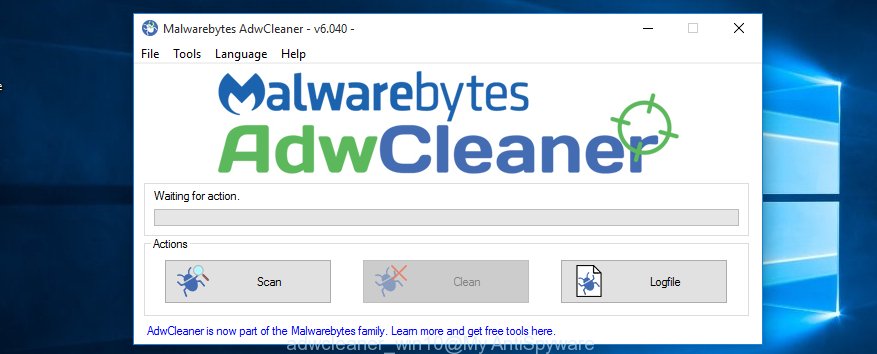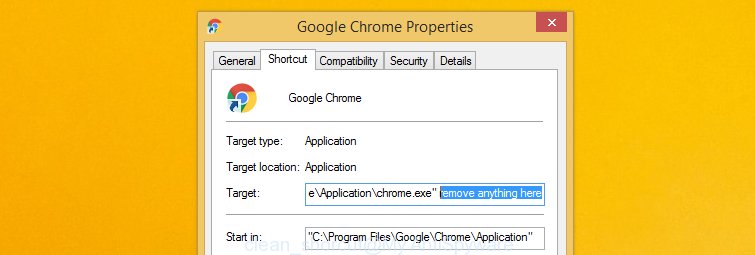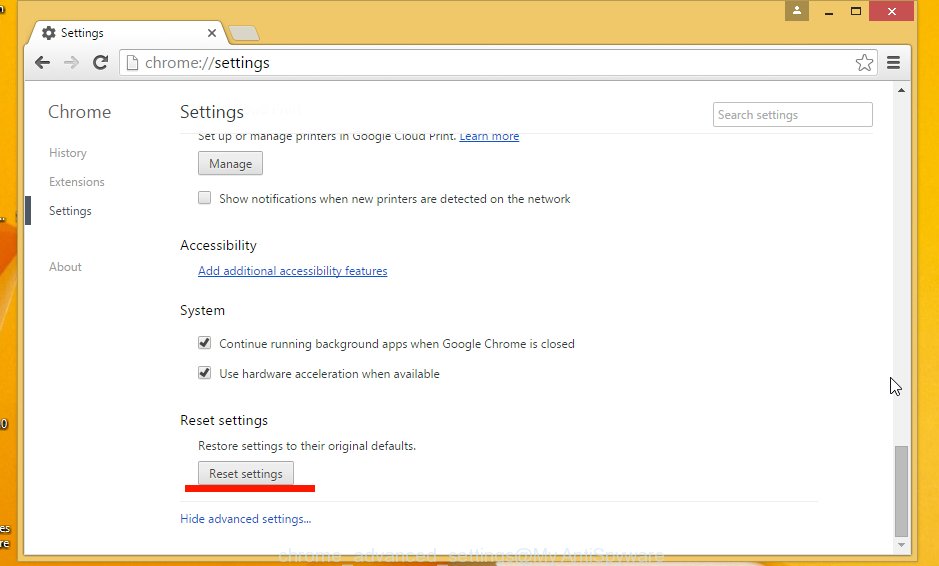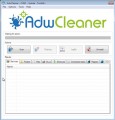If your antivirus or anti-malware software detects Adware.Yelloader threat then it indicates that your PC system is infected with a previously unknown unwanted program (PUP). This unwanted software usually come with some freeware or from malicious web sites that ask users to download and install a Flash Player or Java update. Once started, the Adware.Yelloader will be configured to start automatically when Windows starts. The potentially unwanted program can open lots of unwanted pop ups and annoying ads, inject advertisements into webpages that you are opening in the Google Chrome, Mozilla Firefox, Internet Explorer or Edge, hijack the internet browser’s settings such as start page, new tab page and search engine, and so on.
We suggest you to remove Adware.Yelloader and clean your computer ASAP, until the presence of the unwanted software has not led to even worse consequences. Complete the instructions below that will assist you to completely get rid of Adware.Yelloader, using only the built-in Windows features and a few of specialized free tools.
Common symptoms of Adware.Yelloader
If you still are not sure that your computer is infected with this parasite, then check your computer for the common symptoms of the infection:
- Your browser displays banner ads where previously you have never seen.
- Google Chrome, Mozilla Firefox and Microsoft Internet Explorer (Edge) shows a lot of annoying advertisements.
- Web browser’s settings such as homepage and default search engine are hijacked
- Your an antivirus or antispyware software detects an infection.
- Internet connection may be slow.
How to remove Adware.Yelloader
The answer is right here on this page. We have put together simplicity and efficiency. It will help you easily to clean your PC of the potentially unwanted program. Read this manual carefully, bookmark or print it, because you may need to close your web browser or restart your computer.
- Scan your computer with MalwareBytes Anti-malware
- Scan your computer with AdwCleaner
- Scan your computer with Kaspersky Virus Removal Tool
- Disinfect browser’s shortcuts
- Reset web-browser’s settings
- Protect your computer from annoying ads and malicious sites
Scan your computer with MalwareBytes Anti-malware
We suggest using the Malwarebytes Free which are completely clean your PC system. The free utility is an advanced malware removal application developed by (c) Malwarebytes lab. This program uses the world’s most popular antimalware technology. It’s able to help you get rid of browser hijackers, PUPs, malicious software, adware, toolbars, ransomware and other security threats from your PC system for free.
Download Malwarebytes Free from the link below.
327714 downloads
Author: Malwarebytes
Category: Security tools
Update: April 15, 2020
Once installed, the Malwarebytes will try to update itself and when this task is finished, press the “Scan Now” button to perform a scan of your computer. During the scan it will detect all threats present on your personal computer. In order to get rid of all threats, simply click “Quarantine Selected” button.
The Malwarebytes is a free program that you can use to remove all detected folders, files, services, registry entries and so on. To learn more about this malware removal utility, we recommend you to read and follow the tutorial or the video guide below.
Scan your computer with AdwCleaner
AdwCleaner is a free removal tool that can be downloaded and use to get rid of browser hijackers, ‘ad-supported’ software (also known as adware), malware, potentially unwanted software, toolbars and other threats from your computer. You can run this tool to scan for threats even if you have an antivirus or any other security program.

- Download AdwCleaner by clicking on the link below.
AdwCleaner download
225786 downloads
Version: 8.4.1
Author: Xplode, MalwareBytes
Category: Security tools
Update: October 5, 2024
- Double press the AdwCleaner icon. Once this tool is opened, click “Scan” button . This will begin scanning the whole system to find out Adware.Yelloader.
- Once the scan is done, the AdwCleaner will open a scan report. Review the report and then press “Clean” button. It will open a prompt, press “OK”.
These few simple steps are shown in detail in the following video guide.
Scan your computer with Kaspersky virus removal tool
Kaspersky virus removal tool is a well-known free security tool. It uses the Kaspersky Anti-Virus engine to detect and remove viruses, trojans and malware.
- Download Kaspersky virus removal tool from the following link and save it directly to your Windows Desktop.
Kaspersky virus removal tool
129488 downloads
Author: Kaspersky® lab
Category: Security tools
Update: March 5, 2018
- Double-click on the KVRT icon found on your desktop. Once initialization process is finished, you will see the Kaspersky virus removal tool screen.
- Click Change Parameters and set a check near all your drives. Click OK to close the Parameters window.
- Press Start scan button. Kaspersky virus removal tool will now start scanning your computer for known infections. This procedure can take some time, so please be patient.
- When KVRT has finished scanning, click on Continue to start a cleaning process.
Disinfect browser’s shortcuts
Now you need to clean up the web browser shortcuts. Check that the shortcut referring to the right exe-file of the web-browser, and not on any unknown file.
Right click on the web browser’s shortcut, click Properties option. On the Shortcut tab, locate the Target field. Click inside, you will see a vertical line – arrow pointer, move it (using -> arrow key on your keyboard) to the right as possible. You will see a text “http://site.address” that has been added here. Remove everything after .exe. An example, for Google Chrome you should remove everything after chrome.exe.

To save changes, click OK . You need to clean all internet browser’s shortcuts. So, repeat this step for the Google Chrome, Internet Explorer, Firefox and MS Edge.
Reset web-browser’s settings
Chrome
Reset Google Chrome settings is a simple way to remove the browser hijacker, dangerous and adware extensions, as well as to restore the internet browser’s homepage, new tab and default search engine that have been replaced by any unwanted programs.
First run the Chrome. Next, click the button in the form of three horizontal stripes (![]() ). It will open the main menu. Further, click the option named “Settings”. Another way to display the Chrome’s settings – type chrome://settings in the web browser adress bar and press Enter.
). It will open the main menu. Further, click the option named “Settings”. Another way to display the Chrome’s settings – type chrome://settings in the web browser adress bar and press Enter.

The web-browser will open the settings screen. Scroll down to the bottom of the page and click the “Show advanced settings” link. Now scroll down until the “Reset settings” section is visible, as shown on the screen below and press the “Reset settings” button.

The Google Chrome will display the confirmation dialog box. You need to confirm your action, press the “Reset” button. The web browser will start the task of cleaning. When it’s complete, the browser’s settings including start page and search provider by default back to the values that have been when the Chrome was first installed on your computer.
Firefox
If the Mozilla Firefox web browser application is hijacked, then resetting its settings can help. The Reset feature is available on all modern version of Firefox. A reset can fix many issues by restoring FF settings such as homepage and search engine by default to its default state. It will save your personal information such as saved passwords, bookmarks, and open tabs.
First, launch the Firefox and press ![]() button. It will display the drop-down menu on the right-part of the web-browser. Further, click the Help button (
button. It will display the drop-down menu on the right-part of the web-browser. Further, click the Help button (![]() ) like below
) like below
.

In the Help menu, select the “Troubleshooting Information” option. Another way to open the “Troubleshooting Information” screen – type “about:support” in the browser adress bar and press Enter. It will display the “Troubleshooting Information” page as shown on the image below. In the upper-right corner of this screen, click the “Refresh Firefox” button.

It will display the confirmation dialog box. Further, click the “Refresh Firefox” button. The Mozilla Firefox will begin a task to fix your problems that caused by the Adware.Yelloader browser hijacker infection. Once, it’s complete, click the “Finish” button.
Internet Explorer
First, open the Internet Explorer, click ![]() ) button. Next, click “Internet Options” as shown below.
) button. Next, click “Internet Options” as shown below.

In the “Internet Options” screen select the Advanced tab. Next, press Reset button. The Internet Explorer will open the Reset Internet Explorer settings dialog box. Select the “Delete personal settings” check box and click Reset button.

You will now need to restart your computer for the changes to take effect. It will disable malicious and ad-supported web-browser’s extensions and restore the Internet Explorer’s settings like home page, newtab page and search provider by default to default state.
Protect your computer from annoying ads and malicious sites
It is also critical to protect your internet browsers from harmful sites and ads by using an adblocker application like AdGuard. Security experts says that it’ll greatly reduce the risk of malware, and potentially save lots of money. Additionally, the AdGuard can also protect your privacy by blocking almost all trackers.
- Download AdGuard program from the following link.
Adguard download
27034 downloads
Version: 6.4
Author: © Adguard
Category: Security tools
Update: November 15, 2018
- When the download is finished, start the downloaded file. You will see the “Setup Wizard” program window. Follow the prompts.
- Once the installation is finished, click “Skip” to close the installation program and use the default settings, or click “Get Started” to see an quick tutorial that will assist you get to know AdGuard better.
- In most cases, the default settings are enough and you do not need to change anything. Each time, when you start your personal computer, AdGuard will run automatically and block pop-ups, annoying ads, as well as other malicious or misleading web pages. For an overview of all the features of the program, or to change its settings you can simply double-click on the icon named AdGuard, which is located on your desktop.
Finish words
Now your PC should be clean of the Adware.Yelloader. Delete AdwCleaner. We suggest that you keep AdGuard (to help you stop unwanted popup ads and unwanted harmful web-pages) and Malwarebytes (to periodically scan your computer for new malware, browser hijackers and ad supported software). Make sure that you have all the Critical Updates recommended for Windows OS. Without regular updates you WILL NOT be protected when new browser hijacker, malicious software and ad-supported software are released.
If you are still having problems while trying to remove Adware.Yelloader from your internet browser, then ask for help in our Spyware/Malware removal forum.


















